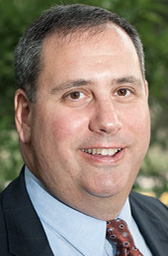

DNS |
Sponsored by |

|
 The DNS Abuse Institute recently published our sixth monthly report for our project to measure DNS Abuse: DNSAI Compass ('Compass'). Compass is an initiative of the DNS Abuse Institute to measure the use of the DNS for phishing and malware. The intention is to establish a credible source of metrics for addressing DNS Abuse. We hope this will enable focused conversations, and identify opportunities for improvement.
The DNS Abuse Institute recently published our sixth monthly report for our project to measure DNS Abuse: DNSAI Compass ('Compass'). Compass is an initiative of the DNS Abuse Institute to measure the use of the DNS for phishing and malware. The intention is to establish a credible source of metrics for addressing DNS Abuse. We hope this will enable focused conversations, and identify opportunities for improvement.
 Blockchain domain names, domains that are stored on blockchain or cryptocurrency exchanges, are part of a growing, unregulated, and decentralized internet. Right now, blockchain domains are used mostly by cryptocurrency users, but they are growing in popularity - the Ethereum name service reported over 2.2 million .eth domain name registrations in 2022. At the same time, crypto scams are also exploding, reaching a total of $3.5 billion in losses in 2022.
Blockchain domain names, domains that are stored on blockchain or cryptocurrency exchanges, are part of a growing, unregulated, and decentralized internet. Right now, blockchain domains are used mostly by cryptocurrency users, but they are growing in popularity - the Ethereum name service reported over 2.2 million .eth domain name registrations in 2022. At the same time, crypto scams are also exploding, reaching a total of $3.5 billion in losses in 2022.
 It's unclear what this means in the long run. Do bad actions and actors go undetected? Do we lose our visibility into network management? What is a "secure" network, and how do we secure it using traditional techniques of network perimeter traffic inspection when all the network traffic is opaque? If we can't see inside the DNS anymore, then how can we tell if (or when) the DNS has been captured by one or two digital behemoths?
It's unclear what this means in the long run. Do bad actions and actors go undetected? Do we lose our visibility into network management? What is a "secure" network, and how do we secure it using traditional techniques of network perimeter traffic inspection when all the network traffic is opaque? If we can't see inside the DNS anymore, then how can we tell if (or when) the DNS has been captured by one or two digital behemoths?
 The IETF held its 115th meeting in London in November 2022. This was another in the set of hybrid meetings with specific support for online attendees in addition to the normal face-to-face meetings for the week. In no particular order, here are a few of my impressions from the IETF meeting.
The IETF held its 115th meeting in London in November 2022. This was another in the set of hybrid meetings with specific support for online attendees in addition to the normal face-to-face meetings for the week. In no particular order, here are a few of my impressions from the IETF meeting.
 In 1987, CompuServe introduced GIF images, Steve Wozniak left Apple and IBM introduced the PS/2 personal computer with improved graphics and a 3.5-inch diskette drive. Behind the scenes, one more critical piece of internet infrastructure was quietly taking form to help establish the internet we know today. November of 1987 saw the establishment of the Domain Name System protocol suite as internet standards.
In 1987, CompuServe introduced GIF images, Steve Wozniak left Apple and IBM introduced the PS/2 personal computer with improved graphics and a 3.5-inch diskette drive. Behind the scenes, one more critical piece of internet infrastructure was quietly taking form to help establish the internet we know today. November of 1987 saw the establishment of the Domain Name System protocol suite as internet standards.
 Are you doing something interesting with DNS, DNSSEC, or routing security that you would like to share with the larger DNS community at the ICANN 76 meeting in March 2023? If so, please send a brief (1 -- 3 sentence) description of your proposed presentation to [email protected] by the close of business on Friday, 20 January 2023. Are you doing something interesting with DNS, DNSSEC, or routing security that you would like to share with the larger DNS community at the ICANN 76 meeting in March 2023?
Are you doing something interesting with DNS, DNSSEC, or routing security that you would like to share with the larger DNS community at the ICANN 76 meeting in March 2023? If so, please send a brief (1 -- 3 sentence) description of your proposed presentation to [email protected] by the close of business on Friday, 20 January 2023. Are you doing something interesting with DNS, DNSSEC, or routing security that you would like to share with the larger DNS community at the ICANN 76 meeting in March 2023?
 The Internet's Domain Name System undertakes a vitally important role in today's Internet. Originally conceived as a human-friendly way of specifying the location of the other end of an Internet transaction, it became the name of a service point during the transition to a client/server architecture. A domain name was still associated with an IP address, but that 1:1 association was weakened when we started adjusting to IPv4 address exhaustion.
The Internet's Domain Name System undertakes a vitally important role in today's Internet. Originally conceived as a human-friendly way of specifying the location of the other end of an Internet transaction, it became the name of a service point during the transition to a client/server architecture. A domain name was still associated with an IP address, but that 1:1 association was weakened when we started adjusting to IPv4 address exhaustion.
 DNS Abuse and how to address it has been the topic of intense, often conflictual, and rarely conclusive discussions for many years, starting with the very definition of the term and the degree of responsibility bestowed upon DNS operators. In 2018, after several months of intersessional work, the Internet & Jurisdiction Global Conference brought together in Ottawa more than 200 key stakeholders to define a roadmap to address certain jurisdictional challenges on the Internet, including DNS abuse.
DNS Abuse and how to address it has been the topic of intense, often conflictual, and rarely conclusive discussions for many years, starting with the very definition of the term and the degree of responsibility bestowed upon DNS operators. In 2018, after several months of intersessional work, the Internet & Jurisdiction Global Conference brought together in Ottawa more than 200 key stakeholders to define a roadmap to address certain jurisdictional challenges on the Internet, including DNS abuse.
 Transparency and accountability are embedded in ICANN's core values. Indeed, ICANN's Bylaws mandate that "ICANN and its constituent bodies shall operate to the maximum extent feasible in an open and transparent manner ...". Public Interest Registry believes that a dedication to transparency is fundamental to the strength and continued effectiveness of ICANN's multistakeholder model.
Transparency and accountability are embedded in ICANN's core values. Indeed, ICANN's Bylaws mandate that "ICANN and its constituent bodies shall operate to the maximum extent feasible in an open and transparent manner ...". Public Interest Registry believes that a dedication to transparency is fundamental to the strength and continued effectiveness of ICANN's multistakeholder model.
 OARC held its fall meeting in Belgrade on October 22 and 23. Here are my impressions of some of the presentations from that meeting... UI, UX, and the Registry/Registrar Landscape - One of the major reforms introduced by ICANN in the world of DNS name management was the separation of registry and registrar functions. The intent was to introduce competition into the landscape by allowing multiple registries to enter names into a common registry.
OARC held its fall meeting in Belgrade on October 22 and 23. Here are my impressions of some of the presentations from that meeting... UI, UX, and the Registry/Registrar Landscape - One of the major reforms introduced by ICANN in the world of DNS name management was the separation of registry and registrar functions. The intent was to introduce competition into the landscape by allowing multiple registries to enter names into a common registry.